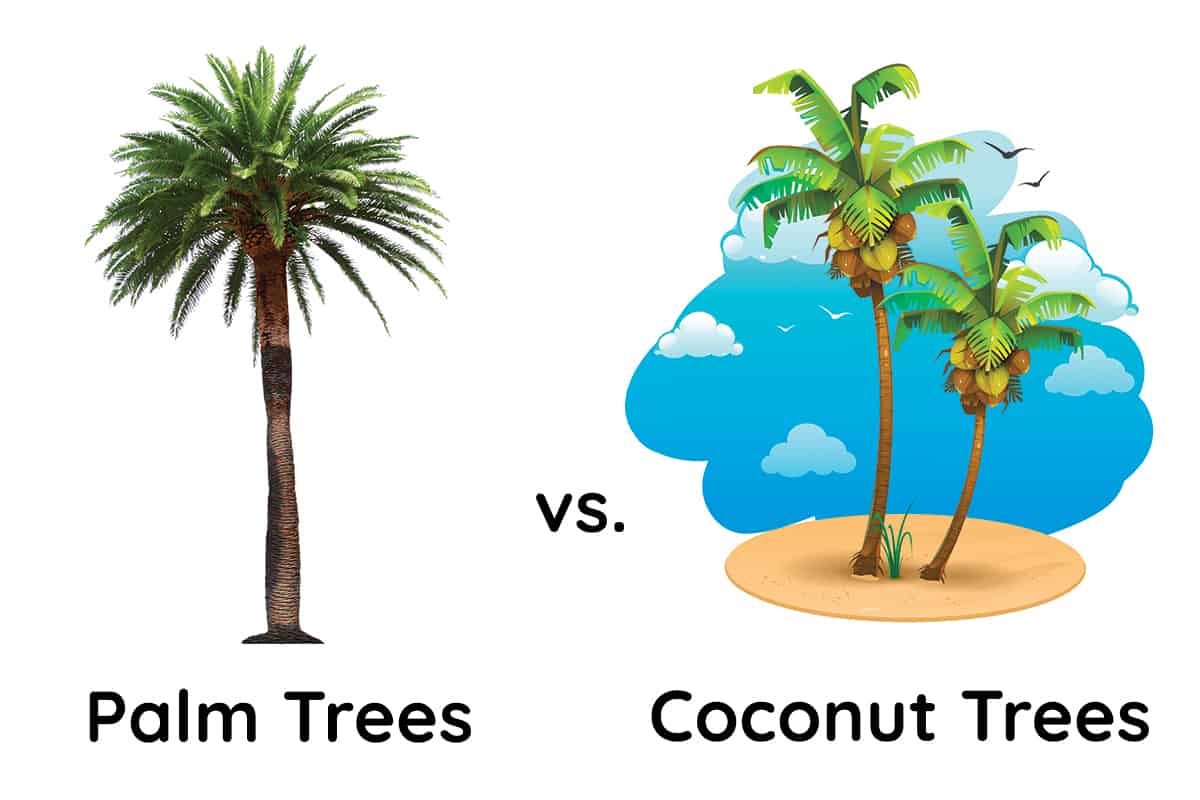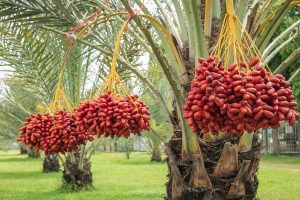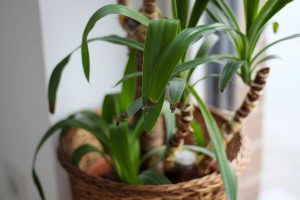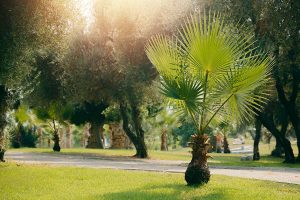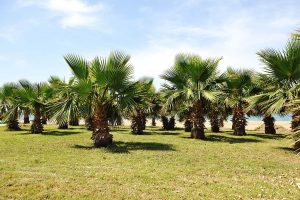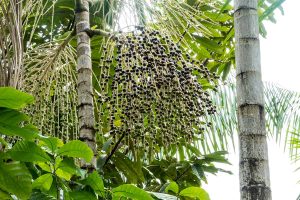Palm trees and coconut trees are commonly mistaken for each other, but there are some key differences between each that can help identify them.
Table of Contents
What Type of Tree is a Palm Tree?
Palm trees are actually a type of tree rather than a species of tree, and technically they are not really trees at all. The term ‘palm trees’ is used when referring to any type of palm from the Arecaceae family, and while many of them do resemble trees in that they have a trunk-like structure, there are also some palms that take the shape of shrubs and have no trunk at all.
Even palms that do look like trees are botanically not considered trees because their trunks are not woody; instead, they are made up of a moist, fibrous structure. Palms are actually closer to being a type of grass rather than a type of tree.
What Type of Tree is a Coconut Tree?
While the term ‘palm tree’ can refer to any number of trees from within the palm family, the coconut tree is a specific species of tree. The coconut tree is in the palm family, which means that all coconut trees are types of palm trees, but all palm trees are not types of coconut trees.
There are a total of over 2500 different species of palm tree. However, there is only one species of coconut tree. The botanical name for the coconut tree is Cocos nucifera.
Differences Between Palm Tree and Coconut Tree
The most obvious difference between palm trees, in general, and the specific coconut tree, is that coconut trees produce coconut fruits, while other palm trees do not. The coconut tree is the only type of palm that produces coconuts, though there are many different varieties within the species which means you can get different varieties of coconuts.
Palm trees also produce fruits, some of which are edible, such as the date fruit from the Date Palm tree, while others produce fruits that are not edible for humans. There are other differences between coconut trees and palm trees, such as the type of climates they prefer to grow in, but there are also a lot of similarities. The differences will depend on which species of palm tree you are comparing the coconut tree to.
Varieties of Coconut Tree
There is only one species of palm that produces coconuts, and this is the coconut palm, botanically known as Cocos nucifera. However, within this species there are over 80 varieties of coconut palm. The varieties can be split into two categories; dwarf coconut palm trees and tall coconut palm trees. As you would expect from the name, dwarf coconut palm trees do not grow to be as big in height as tall coconut palm trees.
However, dwarf coconut palms have the benefit of producing fruit earlier, and the shorter height means they are easier to harvest without the need for a ladder or special equipment. Tall coconut palms typically live for longer, and they are also generally more hardy.
Varieties of coconut palms include:
Malayan Dwarf Coconut Palm
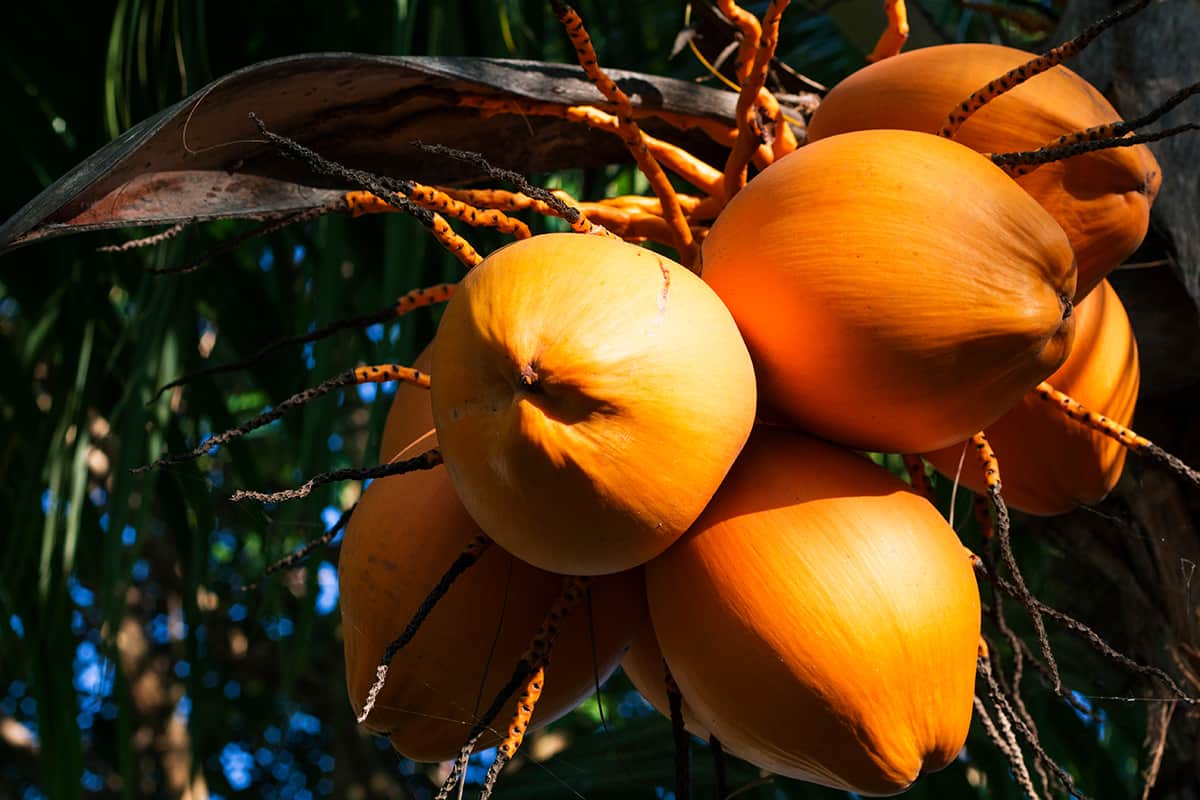
This coconut tree is one of the most important types of dwarf coconut in the world because it possesses a natural immunity to lethal yellowing disease, which is a serious disease killing palm trees across the globe. Its resistance to this deadly disease was first discovered in 1956 in Jamaica when only a small number of trees succumbed to it as it spread through the palm population.
The resistance it has against lethal yellowing disease led to the Malayan Dwarf being used to create hybrid coconut palms, which would also have immunity to the disease.
King Coconut Palm
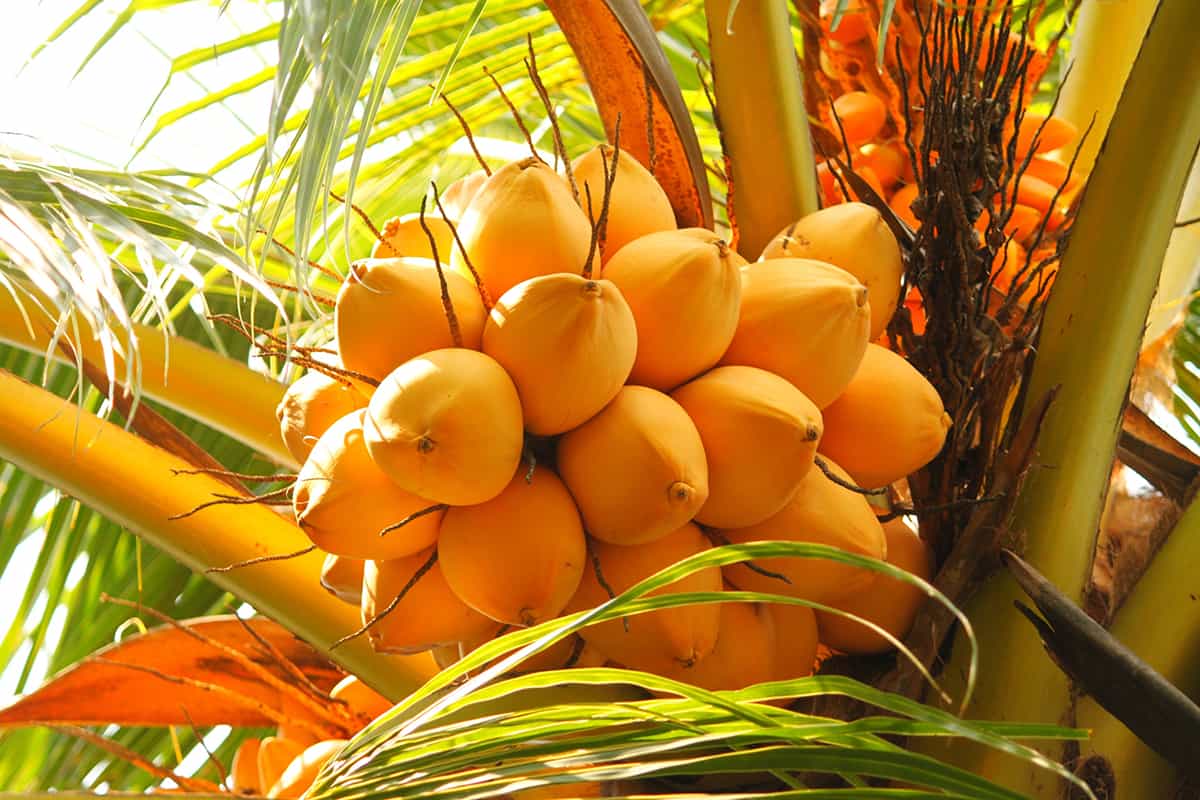
This coconut tree variety is native to Sri Lanka and grows to be around 100 feet tall. Coconuts are produced in clusters of around 40, and they tend to contain less sugar than most other coconuts, so the flesh is not as sweet.
The fruits of the king coconut tree are predominantly used for producing coconut water, which is exported on a mass scale. King coconuts are commonly referred to as ‘coconuts for drinking.
Macapuno Coconut Palm
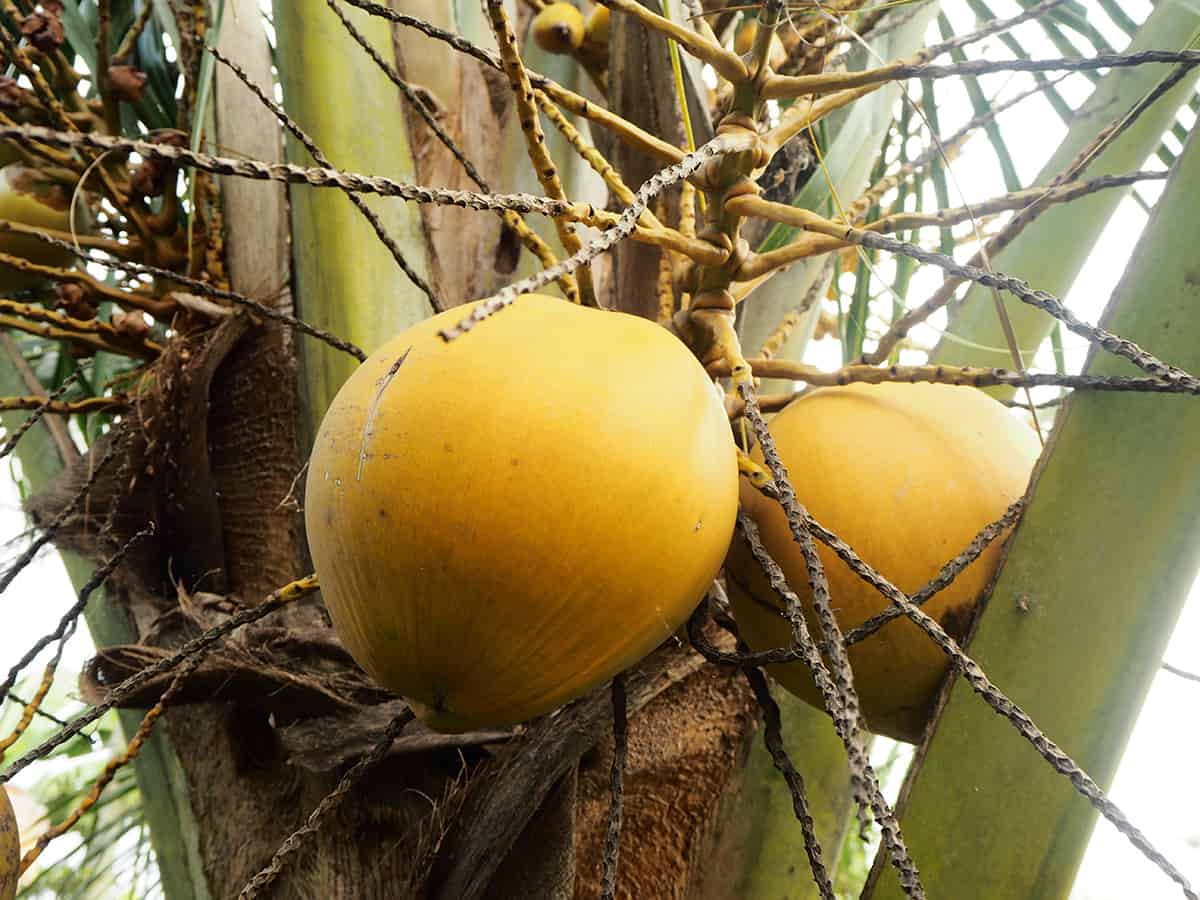
This is a type of coconut tree that originates from the Philippines as the result of a genetic mutation that occurred nearly a century ago. The result of the mutation was fruits that lacked water and instead were dense with sweet, juicy flesh.
This variety of coconut trees is now specifically cultivated for its luxurious fruits that are ideal for use in desserts.
Panama Tall Coconut Palm
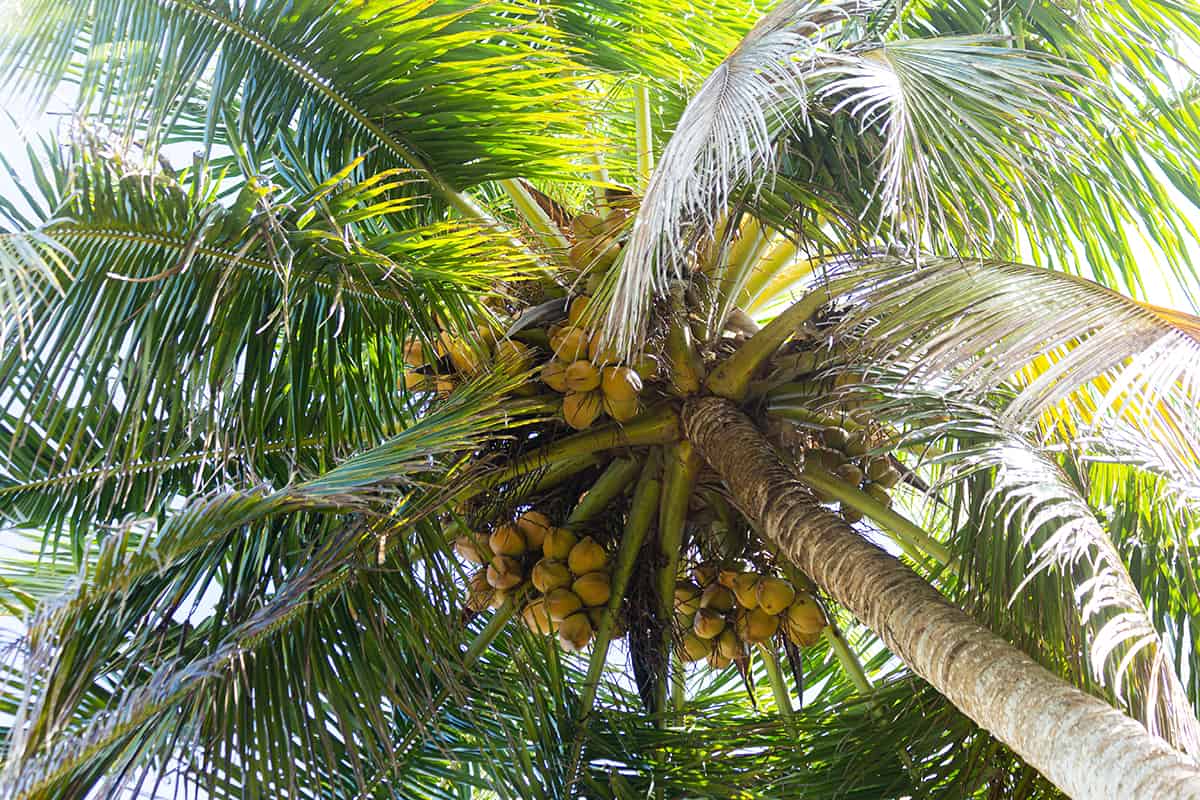
This variety of coconut tree is also commonly known as the Pacific Tall. Physically, it looks very similar to the Jamaican Tall Coconut Palm, with the only noticeable visual difference being that the canopy of the Panama Tall takes more of an umbrella shape as opposed to the rounded shape of the Jamaican Tall.
This variety of coconut tree is favored for its hardiness and its ability to withstand high winds and sudden drops in temperature. These qualities make it ideal for cultivation in regions that commonly experience storms.
Though coconut palms are not known for their hardiness and thrive in hot and humid climates, the Panama Tall is the most cold-tolerant of all varieties of coconut trees.
Maypan Coconut Tree
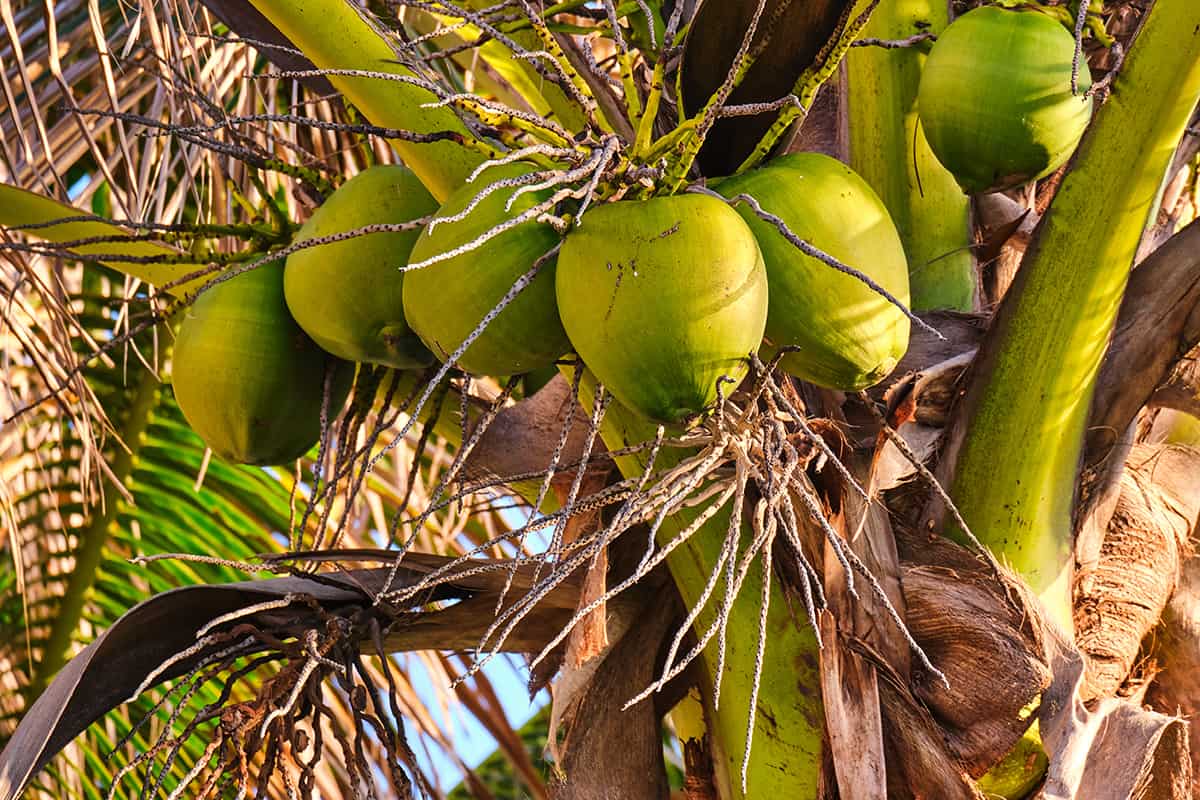
This is a hybrid coconut tree developed in 1962 by the Research Department of the Coconut Industry Board of Jamaica. It is a cross between the Malayan dwarf and the Panama Tall trees, designed to offer excellent resistance to lethal yellowing disease. The resulting tree grows to heights of 60 feet.
What are Coconut Trees used for?
The coconut tree is known in India as ‘Kalpavriksha’, which translates to ‘the all giving tree’, because it can be utilized in so many ways.
Medicine
For centuries, the tree has provided medicinal benefits to local people around the world. Both the coconut water and the kernel of the fruit possess medicinal qualities, including being antiviral, antibacterial, antioxidant, antifungal, antiparasitic, hypoglycemic, antidermatophytic, hepatoprotective, and an immunostimulant. As such, the coconut fruit has been known to be used in treating dysentery and mouth sores.
Food and drink
Coconut fruits are also widely used for eating and drinking, as both the flesh and the water inside the fruits are nutritious and delicious.
Cosmetics
You can find plenty of health and beauty products that contain coconut oil since it has a heavily moisturizing effect and is favored for its antioxidant benefits.
Homewares and construction
Other parts of the coconut besides the fruits are put to good use in areas where these trees are growing in abundance. Despite not being a true tree and therefore not producing typical wood, the trunk of the tree can be utilized for making furniture.
It is not as strong as ‘real’ wood and therefore is generally used for making lightweight items similar to wicker or bamboo furniture. In some countries, the trunks or stems of the coconut is utilized for building pedestrian bridges and huts.
The leaves of palm trees do also not get wasted, as these are strong and fibrous, making them useful for braiding. Coconut tree fronds can be woven to produce baskets, hats, bags, and mats, and they can even be used as a roofing material.
